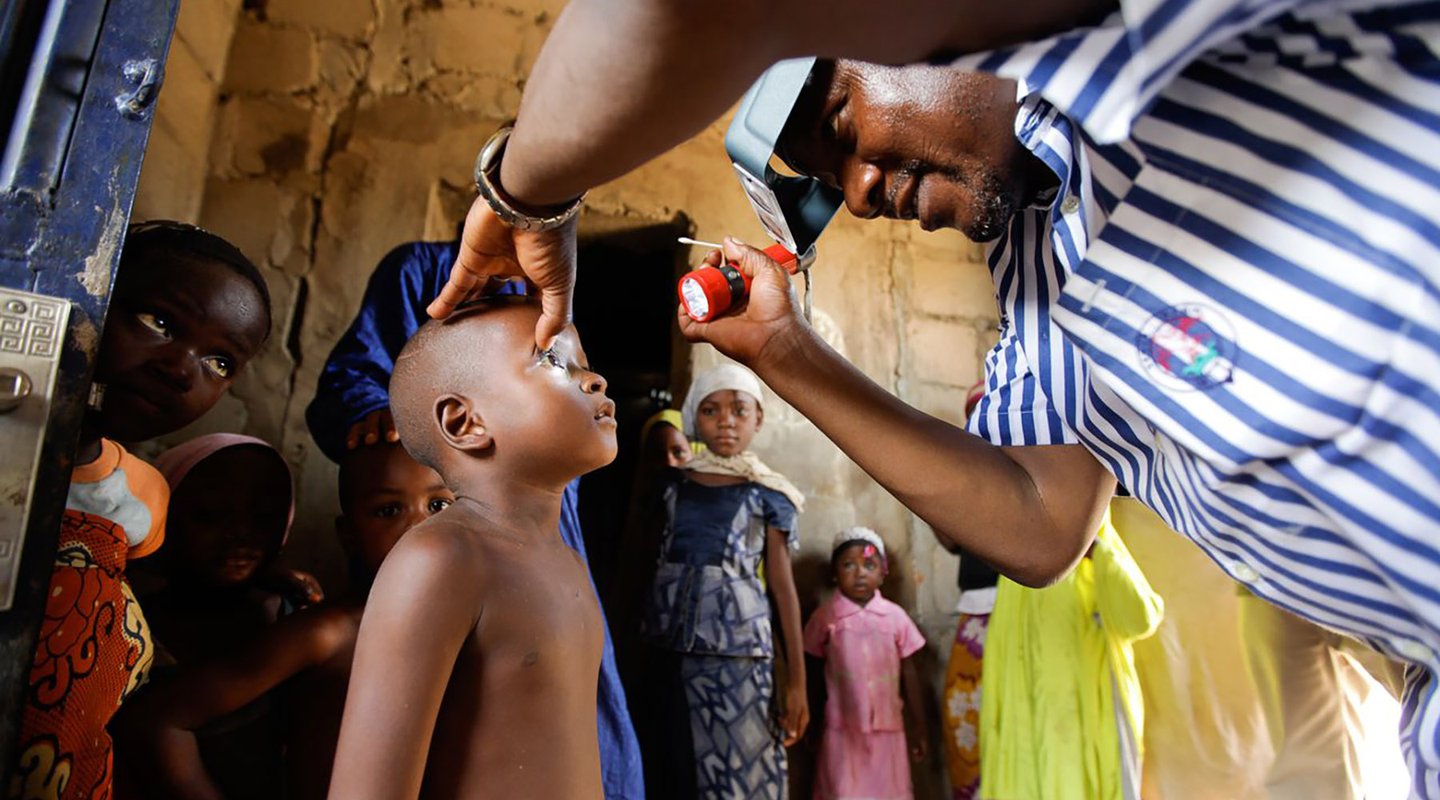What is Trachoma?
Around 115 million people live in areas endemic for blinding trachoma and it is a public health problem in Asia, the Americas, Australia and the Middle East. Nearly 90% of those affected live in Africa
Trachoma is a disease caused by a contagious bacterial infection of the eye. It is commonly spread through contact with contaminated hands or clothing and by flies coming into contact with a person’s eyes or nose.
Trachoma often begins in early childhood and progresses over the years due to episodes of reinfection, causing inflammation and scarring of the inner eyelid. In some people, repeated infection damages the eyelids, causing the eyelashes to turn inwards and to painfully rub against the eye’s surface (a condition known as trichiasis).
If left untreated, a series of complications can lead to irreversible blindness. Trachoma is directly linked to poverty; communities without access to clean water or effective sanitation are the most vulnerable. The disease has a devastating impact on livelihoods because it limits access to education and prevents individuals from being able to work or care for themselves or their families.
Key stats
-
Around 115 million
people live in areas endemic for blinding trachoma in 2023
Source: WHO data 2023
-
Around 1.9 million
people blinded or visually impaired by trachoma
Source: WHO data 2023
-
38 countries
have trachoma as a public health problem
Source: WHO data 2023
Status of elimination of trachoma as a public health problem, 2024
People receiving preventive chemotherapy for blinding trachoma
Since the London Declaration was signed in 2012 and partners committed to defeating neglected tropical diseases, the number of people receiving preventive chemotherapy for blinding trachoma has increased.
Coalition partners
International Coalition for Trachoma Control (ICTC)
ICTC is a coalition of NGOs, donors, research/academic institutions and private sector organisations supporting efforts to eliminate trachoma.
